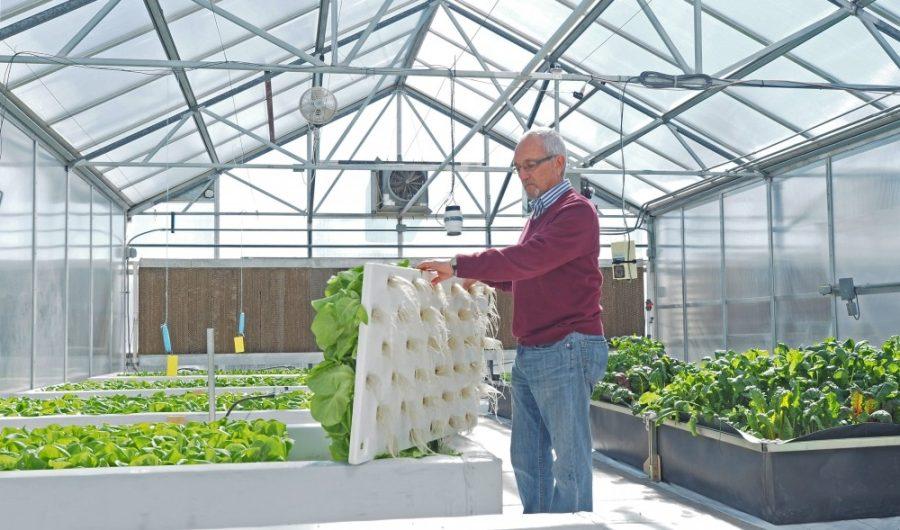Of the many laboratories spread across campus, the Controlled Environment Agriculture Center (CEAC) at UA has a particularly stellar mission.
“The end game is to provide life support for people living on another planet by using controlled environments to grow plants,” said Gene Giacomelli, agriculture and biosystems engineering professor and director of the Controlled Environment Agriculture Center.
Giacomelli and other researchers, led by principal investigator and systems and industrial engineering associate professor Robert Furfaro, are recipients of a 2008 NASA Steckler Space Grant.
They have been tasked with developing sustainable life-support systems here on Earth that will one day be replicated on other planets, such as Mars. Their primary focus is creating a system that will be almost entirely self-sustaining. This could potentially provide astronauts with a way to produce food, recycle carbon dioxide and receive fresh water.
Water storage becomes an issue with space travel because it is essential for life but also heavy. In the closed environment hydroponic systems CEAC specializes, water is conserved and even undertakes a process through which it is purified.
“The water we give [plants] eventually comes out of their leaves and into the air,” Giacomelli said. “We can condense it and have fresh water.”
Plants are the lifeblood of the CEAC project.
“The plants will become the fundamental component of a bioregenerative life support system for long-term, sustainable life on another planet,” Giacomelli said. “Ultimately, that is what NASA and other research centers around the world are looking for.”
RELATED: Interdisciplinary team wins Student Union Rooftop Garden Competition
Although the goal may be within sight, there is still much work to be done.
“This is in contrast to what’s happening right now in the space station,” Giacomelli said. “They’re constantly bringing up supplies and food and are returning waste. So this would offer a more sustainable, permanent, stable system for life support, possibly starting at mars but certainly beyond as well.”
Befitting its nature in an almost Martian desert, the UA is uniquely positioned to lead research in sustainable plant systems for space.
“We focus on controlled environments, primarily greenhouses, relative to food production using hydroponics, and we have engineers and scientists that work together on these projects,” Giacomelli said. “There is nowhere else where you will find something similar.”
Giacomelli and the researchers at the CEAC have a reputation for successfully taking on these kinds of projects. In 2004, Giacomelli and Phil Sadler of Sadler Machine Company worked with Raytheon Polar Services to build a food growth chamber on the south pole. “It’s still down there working right now, Giacomelli said.
There are some who might see this futuristic research as out-of-place for a public university. Where is the return on such an expensive investment on the part of UA?
RELATED: UA works to develop a weed-killing robot
“What we learn from being able to grow crops hydroponically and in these controlled environments is to be more efficient using water, labor, nutrients and energy on another planet,” Giacomelli said. “If we can make it more efficient there, then we can begin to make it more efficient here.”
The project is one of astronomical proportions. However, with the American perspective shifted towards commercial space travel, will we ever see this kind of technology be put into use?
“On the positive side, sooner rather than later. But on the negative side, we’ve still got a ways to go,” Giacomelli said.
In 2010, U.S. President Barack Obama told the audience at Kennedy Space Center that he expects to have a manned mission to Mars by the mid-2030’s.
“As far as the plants are concerned, the technology is there,” Giacomelli said.
With the South Pole Food Growth Chamber as well as the continued research going on at the CEAC, these researchers have proven their ability to grow crops efficiently within limited circumstances.
However, as far as construction of the greenhouse itself goes, there are still some questions left unanswered.
“What we don’t have is some of the materials, for example, the covering of the greenhouse does not exist,” Giacomelli said. “Fortunately, over the past 20 years, we have been training and educating people who will become the growers in these life systems in the future.”
Follow Chandler Donald on Twitter.









